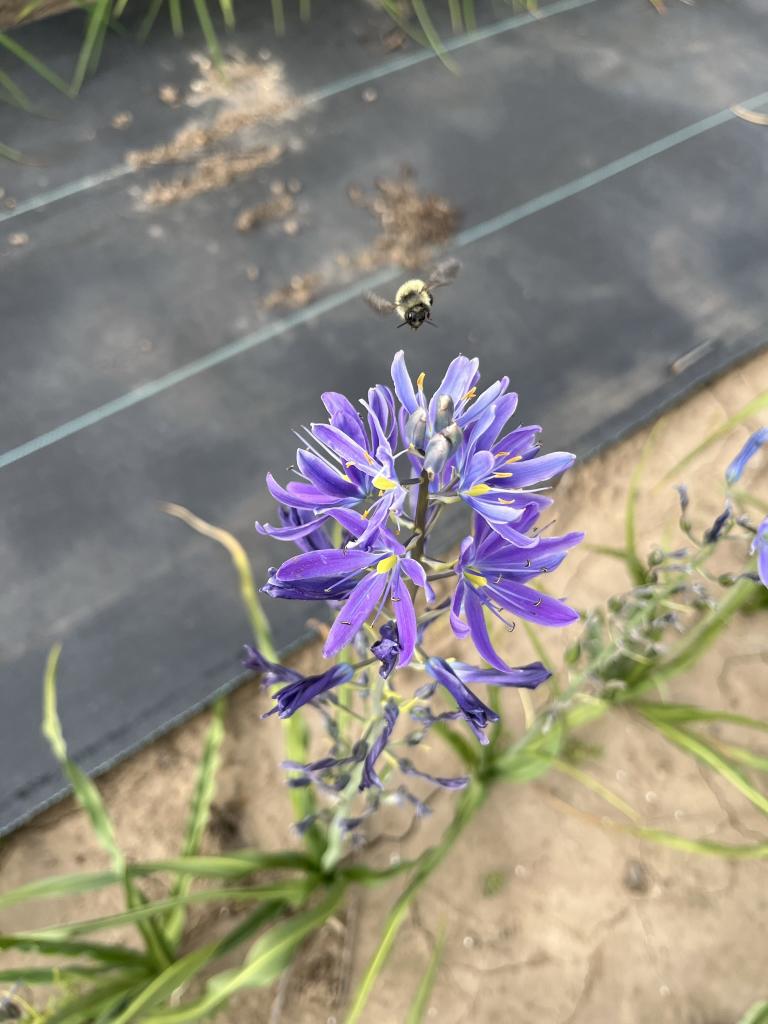By Kate Wellons, June 2023
“Oh, wow! It’s sooo tiny!” I exclaimed, nearly tipping over as I stooped down while perching on a bluff above Highway 101 and the Pacific Ocean. I was expecting small – after all, it’s in the name: small-flowered lotus (Acmispon parviflorus). I was not expecting the shiny new seed pods to be only the length of my thumbnail, or the entire plant to be shorter than my hand is long and nestled deep beneath a salal and bracken fern canopy. The phrase “challenging to collect” flashed across my mind, a comment from a January committee meeting, when Coastal Native Seed Partnership (CNSP) members began to discuss prioritizing the small-flowered lotus for seed amplification.

On June 7th, we went scouting in coastal grasslands between Florence and Yachats, making sure that known populations of the plants were present and flowering in large enough numbers to collect from. This is the first step in the production process for our regional native seed partnerships—if we’re not counting all the committee meetings and partner input that precede the decision about which species to collect. In a few weeks, the seed collection team will return to collect ripened seed pods and begin drying them before cleaning the seeds and putting them into cold storage. Next year, they’ll do it all over again at new collection sites, until we have enough seed from a sufficient distribution of sites to be able to start a genetically diverse seed production field.
For the small-flowered lotus, an annual plant, we’re hoping to get enough seed by the end of next season to start a field that will produce its first seed harvest in 2025. For perennial plant species, the process – from scouting and collecting wild seed to making farm-amplified seed available to partners – can take much longer, since most perennial plants don’t put much energy into seed production in their first year of growing. The longest investment we’ve made so far is for the four bulb species being grown by the Willamette Valley Native Plant Partnership (WVNPP), which should produce their first distributable crops of seed this fall. These species were wild collected between 2013 and 2018, sown into flats in 2018, field-planted in fall 2020, and have been stockpiling nutrients in their bulbs before producing seed. That’s a 6-11 year investment, depending on the collection period!


Native seed partnerships need significant commitments of funding and time from partners to play the long game of native seed production, and we’re grateful for the Oregon Watershed Enhancement Board, Bureau of Land Management, Oregon Metro, Oregon Department of Fish and Wildlife, Oregon Parks and Recreation Department, US Fish and Wildlife Service, US Army Corps of Engineers, US Forest Service, Confederated Tribes of Grand Ronde, and The Nature Conservancy for funding one or both of our northwest native seed partnerships, as well as the participation of our many partners who have made this work possible! To learn more about the Willamette Valley Native Plant Partnership and Coastal Native Seed Partnership, visit our partnerships webpage.
